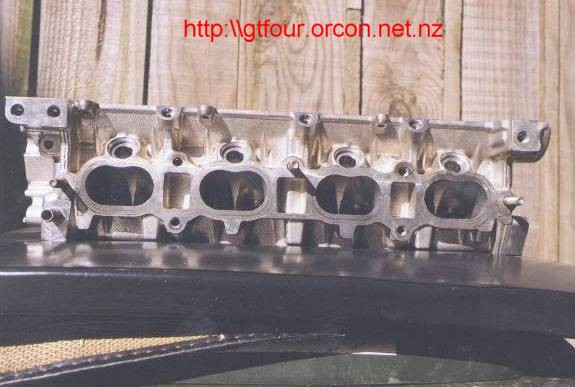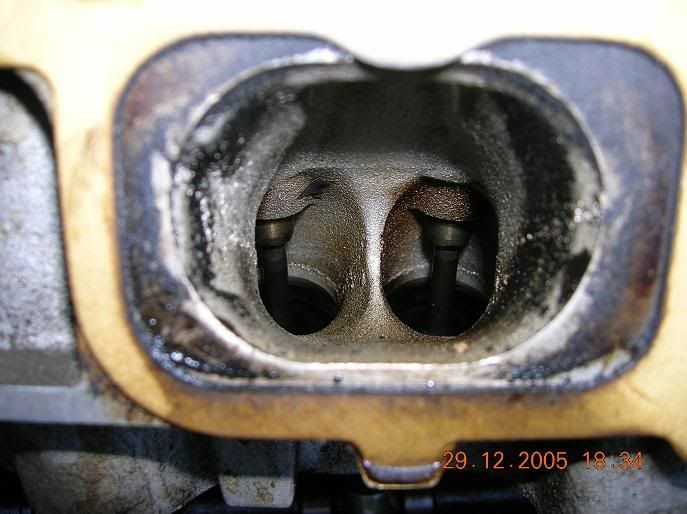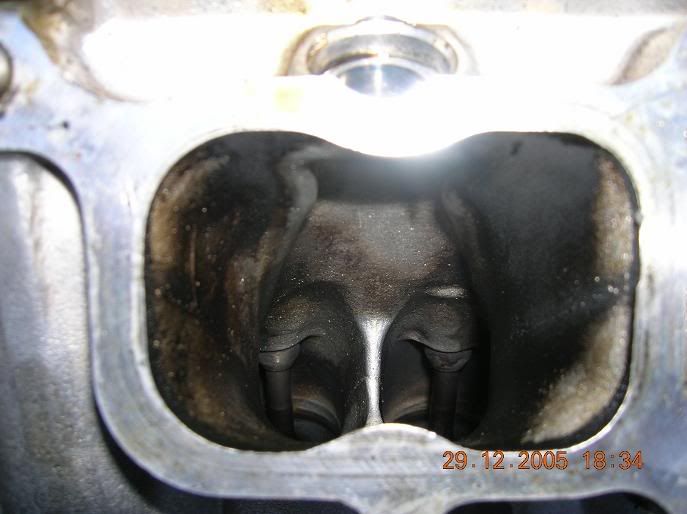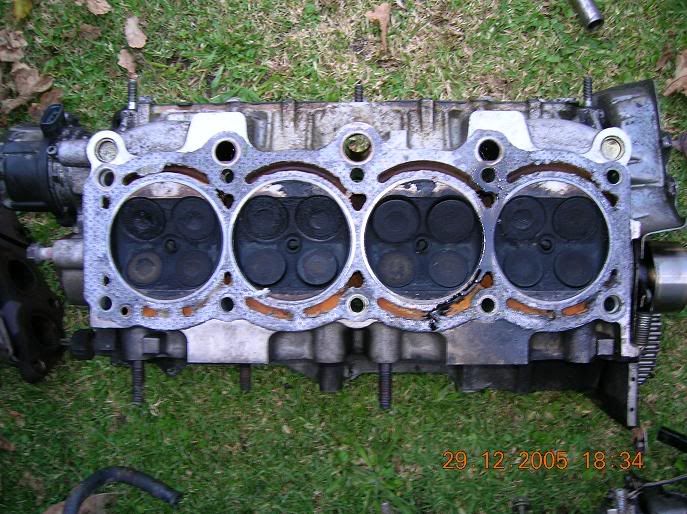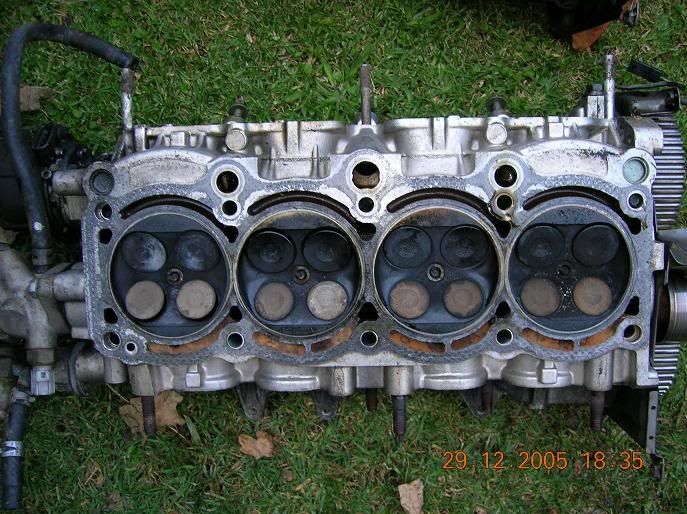Following up on this thread:
http://www.mr2oc.com/showthread.php?t=143500
I've been planning to try the 3S-GE head, as a poor man's alternative to a Gen 3 head.
Some of the main differences:
GE has top feed fuel injectors/rail, GTE has side feed
GE has a 6 stud exhaust flange, GTE has 7 stud, later ones had 8 (or was it 9?)
The cams appear to be the same; I measured with a cheap plastic venier caliper that sits in my toolbox, but I'll probably need something more accurate to find if there's any difference. Anyway they both appear to be around 7.8-8.0mm lift, on both intake and exhaust; in fact the GE has two intake cams in it for some reason (both have slots for the distributor)
Anyway, I've taken some pictures of the ports for the sake of comparison.
Exhaust side. First is 3S-GE, I put the 3S-GTE exhaust gasket on to make comparison easier:
![Image]()
and the 3S-GTE:
![Image]()
Inlet side, 3S-GE first. For some reason this already had a T-VIS gasket on it, so you can clearly see the difference in the port size:
![Image]()
and the 3S-GTE T-VIS head:
![Image]()
And stolen from Richard Doig's website, here's a Gen 3 inlet side:
![Image]()
http://www.mr2oc.com/showthread.php?t=143500
I've been planning to try the 3S-GE head, as a poor man's alternative to a Gen 3 head.
Some of the main differences:
GE has top feed fuel injectors/rail, GTE has side feed
GE has a 6 stud exhaust flange, GTE has 7 stud, later ones had 8 (or was it 9?)
The cams appear to be the same; I measured with a cheap plastic venier caliper that sits in my toolbox, but I'll probably need something more accurate to find if there's any difference. Anyway they both appear to be around 7.8-8.0mm lift, on both intake and exhaust; in fact the GE has two intake cams in it for some reason (both have slots for the distributor)
Anyway, I've taken some pictures of the ports for the sake of comparison.
Exhaust side. First is 3S-GE, I put the 3S-GTE exhaust gasket on to make comparison easier:
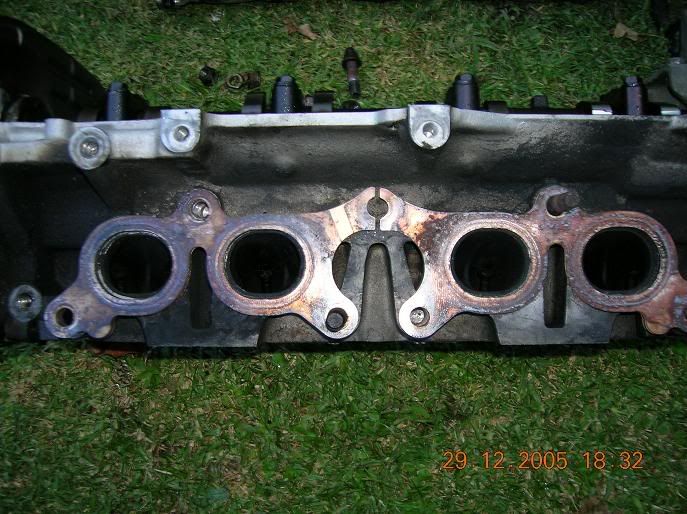
and the 3S-GTE:
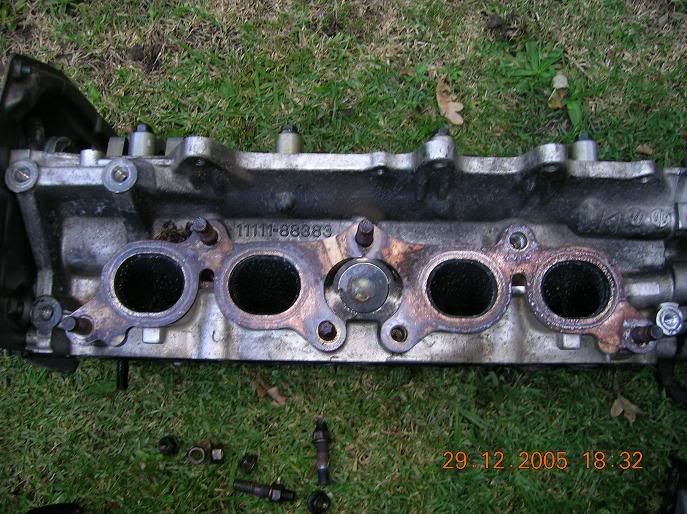
Inlet side, 3S-GE first. For some reason this already had a T-VIS gasket on it, so you can clearly see the difference in the port size:
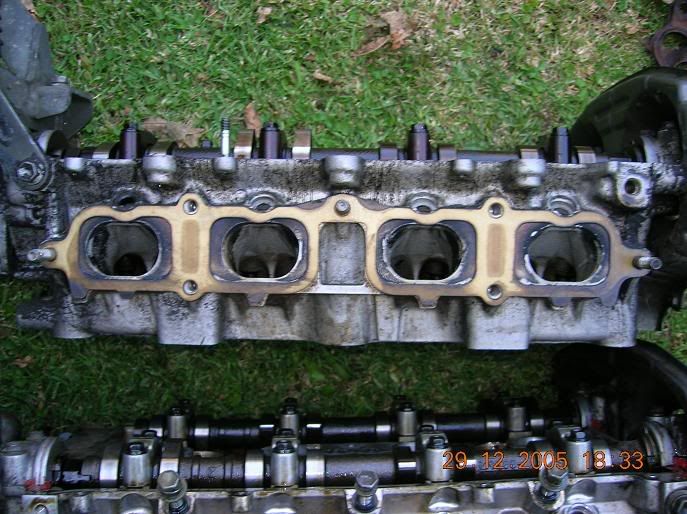
and the 3S-GTE T-VIS head:
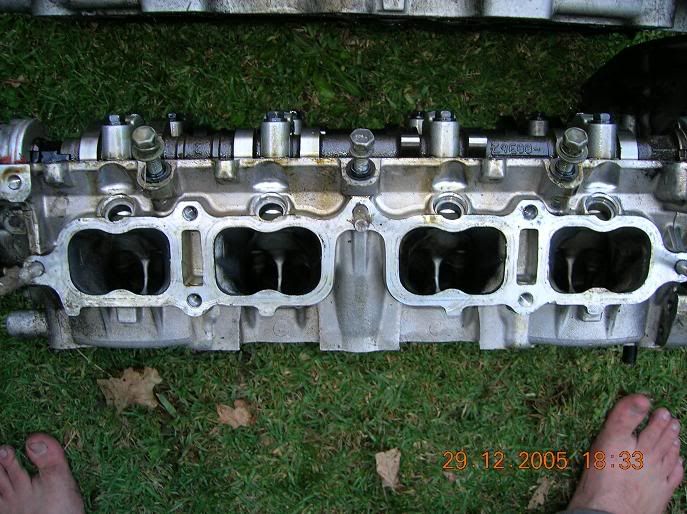
And stolen from Richard Doig's website, here's a Gen 3 inlet side:
